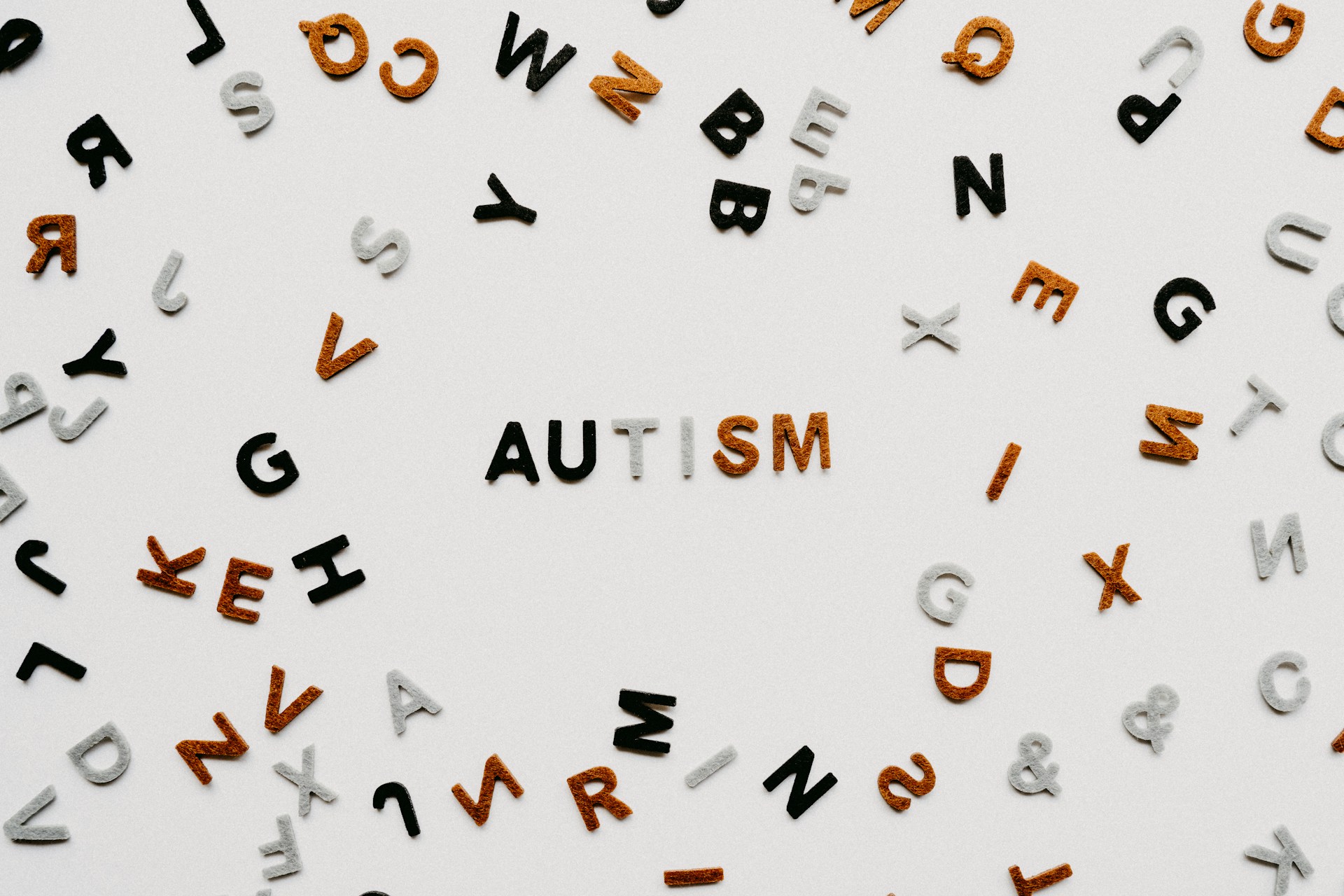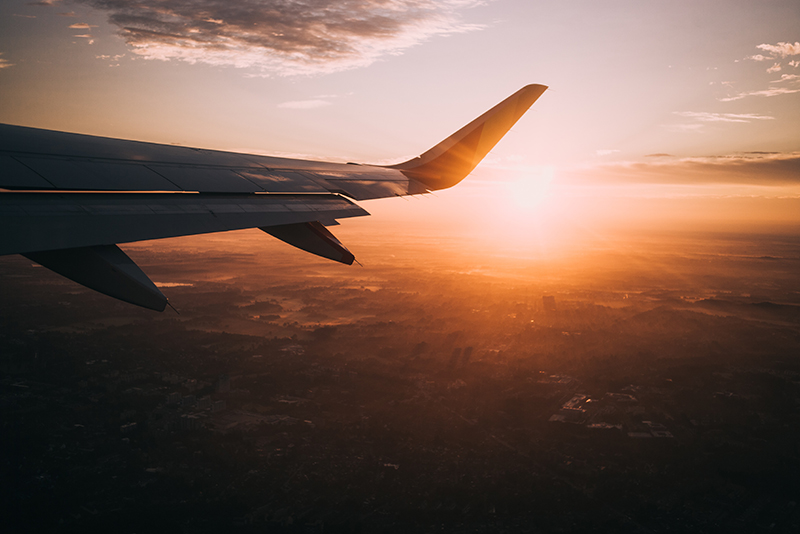Traveling with children can be challenging, and for families with autistic children, flying presents unique hurdles. With crowded airports, unexpected noises, and sensory overload, the journey can be daunting.
However, with preparation and the right resources, flying with an autistic child can be a positive experience. This guide provides practical tips, helpful programs, and tools to make air travel more manageable for autistic children and their caregivers.
Skip Ahead to…
- Planning and Preparing
- The TSA Cares Program
- The Hidden Disability Sunflower Network
- Sensory-Friendly Spaces in Airports
- Packing Essentials
- Tips for the Airport
- Navigating the Flight
1. Planning and Preparing for the Trip

The key to a successful trip often lies in preparation. Knowing what to expect and setting up a smooth travel plan can ease potential anxieties.
Early Flight Booking
Consider booking flights during times that align with your child’s routine to minimize disruptions. If your child finds it easier to handle mornings, aim for an early flight.
Choosing seats near the front of the plane or close to the bathroom can be helpful, as can avoiding crowded areas.
Pre-Flight Communication
Many airlines and airports are willing to make accommodations for travelers flying with an autistic child. Contact the airline in advance to discuss any specific requirements for your child, such as pre-boarding or assistance with seating.
Practice and Visual Aids
Familiarize your child with the airport experience ahead of time. Practice going through the motions of airport security, boarding, and in-flight activities. Visual schedules or social stories—a step-by-step guide with pictures of each part of the journey—can help your child understand what to expect, which can reduce anxiety.
The Arc have an initiative, Wings for Autism, where you can sign up for wing events. These regular events comprise practice flights at participating airports. At these events, the participant can practice checking in to receive boarding passes, the TSA security checkpoint, waiting in the boarding area and boarding the aircraft.
2. The TSA Cares Program
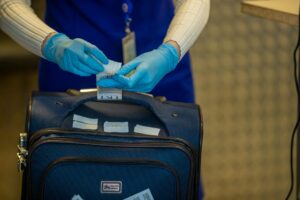
The Transportation Security Administration (TSA) offers the TSA Cares program, which provides extra support for travelers with disabilities and medical conditions.
What TSA Cares Is
TSA Cares is a free service that assigns a dedicated agent to help families with special needs through the security process. They can assist with screening, help you find alternative procedures if traditional screening may be stressful, and provide personalized guidance.
How to Use It
Families can request TSA Cares assistance by contacting TSA at least 72 hours before travel. This support can reduce wait times and provide a smoother, more predictable security experience, especially for those flying with autism. The TSA agent will guide you through the security checkpoint and ensure that your family’s needs are met.
3. The Hidden Disability Sunflower Network

The Hidden Disability Sunflower program offers discreet support for individuals with hidden disabilities, including autism, through the use of a sunflower lanyard.
About the Program
When a child or family member wears the Hidden Disability Sunflower lanyard, airport staff are alerted that extra support, patience, or understanding may be needed. This symbol allows staff to recognize the unique needs of travelers with hidden disabilities without verbal explanation.
How to Get a Lanyard
Lanyards for children flying with autism can be requested at participating airports or ordered online in advance from the Hidden Disability Sunflower Network website. Check with your departing and arriving airports to see if they participate in the program.
4. Sensory-Friendly Spaces in Airports

Indoor environmental conditions through both increased temperature and noise do stress autistic people 1 and airports are increasingly recognizing the need for sensory-friendly spaces, offering quiet rooms, yoga rooms, and sensory rooms where families can find a respite from the chaos of busy terminals.
Sensory rooms provide a calming environment equipped with soft lighting, sensory tools, and quiet spaces for those needing a break from the bustling airport atmosphere. Some airports also offer yoga rooms or quiet lounges to provide more low-stimulation environments.
List of U.S. Airports with Sensory Rooms and Quiet Spaces
| Airport | IATA Code | Type of Room(s) | Location |
|---|---|---|---|
| Lehigh Valley International Airport | ABE | Sensory | Concourse Building – More Information |
| Albuquerque International Airport | ABQ | Quiet, Meditation or Chapel | First Floor Baggage Claim – More Information |
| Hartsfield-Jackson International Airport | ATL | Sensory | F Concourse – More Information |
| Birmingham International Airport | BHM | Sensory | Concourse B |
| Burlington International Airport | BTV | Yoga | Second Floor, Pre-Security – More Information |
| Baltimore/Washington International Airport | BWI | Quiet, Meditation, or Chapel | By the Delta Ticket Counter, Closest to D/E Security Checkpoint – More Information |
| Akron Canton Airport | CAK | Sensory | Near Gate 5 – More Information |
| Columbus John Glenn International Airport | CMH | Quiet, Meditation, or Chapel | Near Baggae Claim, by Carousel 6 – More Information |
| Cincinnati/Kentucky International Airport | CVG | Sensory | Concourse A, next to Over the Rhine Market – More Information |
| Newark International Airport | EWR | Sensory | Terminal A, Pre-Security – More Information |
| Sioux Falls Regional Airport | FSD | Yoga | Please Enquire at the Airport |
| Houston Hobby Airport | HOU | Quiet, Meditation, or Chapel | Level 1, Pre-security and Central Concourse, Post-security – More Information |
| Houston George Bush Intercontinental Airport | IAH | Quiet, Meditation, or Chapel | Located Within the Mother’s Room in Terminal A North |
| Indianapolis International Airport | IND | Sensory | Near Gates A5 and B5 – More Information |
| Kansas City International Airport | KCI | Sensory | Atrium B near Concourse B – More Information |
| Los Angeles International Airport | LAX | Quiet, Meditation, or Chapel | Tom Bradley International Terminal, near Gate 130 |
| New York LaGuardia International Airport | LGA | Sensory | Terminal C, Post-security – More Information |
| Chicago Midway International Airport | MDW | Yoga | More Information |
| Miami International Airport | MIA | Yoga | Concourse C, near Mother’s Room |
| Orlando International Airport | MCO | Quiet, Meditation, or Chapel | Serenity Room: Terminal 3, near Gates C230-C238; Reflection Rooms: near Gates 70-99, and Gates 1-59 |
| Milwaukee Mitchell International Airport | MKE | Quiet, Meditation, or Chapel | Level 3, near Daily Parking Walkway – More Information |
| Minneapolis-St. Paul International Airport | MSP | Quiet, Meditation, or Chapel | Terminal 1, Mezzanine Level – More Information |
| Myrtle Beach International Airport | MYR | Quiet, Meditation, or Chapel | Near Baggage Service Offices – More Information |
| Chicago O’Hare International Airport | ORD | Yoga | Terminal 3 Rotunda, Mezzanine Level – More Information |
| Philadelphia International Airport | PHL | Quiet, Meditation, or Chapel | D-E Connector, Post-security |
| Phoenix International Airport | PHX | Sensory, Quiet, Meditation, or Chapel | Terminal 4, Level 3 – More Information |
| Pittsburgh International Airport | PIT | Sensory | Concourse A, near Gates 9-11 |
| Raleigh Durham International Airport | RDU | Quiet, Meditation, or Chapel | Terminal 2, Pre-Security – More Information |
| San Diego International Airport | SAN | Quiet, Meditation, or Chapel | Terminal 2, Post-security |
| Seattle-Tacoma International Airport | SEA | Sensory, Quiet, Meditation, or Chapel | A Train Station Level, Post-security – More Information |
| San Francisco International Airport | SFO | Quiet, Meditation, or Chapel, Yoga | Berman Reflection Room: Ed Lee International Main Hall, Pre-security; Yoga Rooms: Terminals 2 and 3 – More Information |
| Tulsa International Airport | TUL | Sensory | Lower-level Guest Services Areas, Post-security in Concourse A and B – More Information |
5. Packing Essentials for Comfort and Engagement
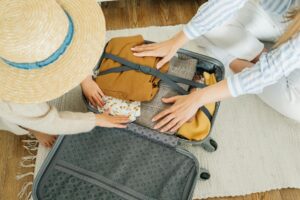
Packing the right items can be a lifesaver during a trip. Here’s a checklist of items that can make the journey more comfortable for your child:
Sensory Tools
Items like noise-canceling headphones, a weighted lap blanket, or sunglasses can help manage sensory input. And fidget toys can also help to calm and de-stress. Consider any favorite tools your child uses to self-soothe and make sure they’re easily accessible during the flight.
Favorite Comfort Items
Familiar items, like a favorite blanket, stuffed animal, or pillow, can help your child feel more secure in a new environment. These comforting items can create a sense of familiarity and provide an emotional anchor during the trip.
Snacks and Entertainment
Bring your child’s favorite snacks to avoid any dietary or sensory-related issues.
Tablets with pre-downloaded movies, interactive games, coloring books, or storybooks can help keep your child occupied and comfortable.
6. Tips for Flying with an Autistic Child and the Airport Experience
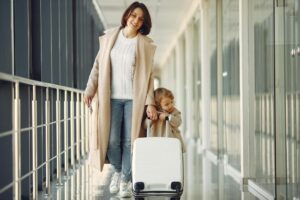
Getting through the airport can be overwhelming, but with a few adjustments, it can be managed smoothly.
Arrive Early, But Not Too Early
Arriving with enough time for a relaxed pace through security and boarding is essential but avoid excessive wait times in the terminal if they may lead to anxiety.
In an article on common anxiety triggers and autism, The Indiana Institute on Disability and Community writes that time-related anxiety is common in individuals with autism. Arriving early may reassure them, but arriving too early without an itinerary may cause anxiety due to ‘unstructured time’.
Plan your time at the airport in advance. Even a loose itinerary may help to keep your child calm and occupied. For example, you may wish to arrange to visit a terminal restaurant at a certain time and plan a window to wait at the gate.
Park near the Airport and Book a Lounge
Anna Harford, mother of an autistic child and author of Top Advice for Surviving Plane Travel With Your Autistic Child recommends booking an airport lounge and parking to ‘avoid the stress of taxis and [buses]’. Lounges also provide an ‘oasis’ away from the chaos and noise of the terminal, a better place to wait for noise-sensitive children and those prone to overstimulation.
Pre-Boarding Options
Many airlines offer early boarding for families who may need extra time to get settled. Check with the airline gate agent to request pre-boarding if it’s not already offered.
Communication with Staff
Don’t hesitate to let the gate agents, flight attendants, and other airport staff know about your child’s specific needs. Most staff members are understanding and willing to offer additional assistance when they’re aware of a passenger’s needs.
7. Navigating the Flight
Once on board, your goal is to create as comfortable an environment as possible for your child.
Onboard Comfort
If your child needs specific seating (such as a window seat or near the bathroom), request this ahead of time or speak to the gate agent. Have comfort items and sensory tools easily accessible to help them settle in for the flight.
Keeping Calm and Managing Expectations
As a caregiver, your calm demeanor can positively affect your child’s experience. Taking deep breaths, managing expectations realistically, and keeping an understanding tone will help you and your child feel more at ease.
Flying with an autistic child may require extra planning, but the experience can be rewarding and enriching with the right tools and strategies. Programs like TSA Cares and the Hidden Disability Sunflower Network, along with sensory-friendly spaces and careful preparation, are resources available to you.
With these strategies in place, your family can create positive memories that make every part of the journey worthwhile. Safe travels!
For more resources on Living with Autism Spectrum Disorder please visit the CDC website.
Sources:
- Marzi, A., Caniato, M. & Gasparella, A. The influence of indoor temperature and noise on autistic individuals. Sci Rep 15, 18802 (2025). https://doi.org/10.1038/s41598-025-02358-4 ↵
Photos by:
Annie Spratt – Unsplash | Christin Hume – Unsplash | Sergei Starostin – Pexels | Di Maitland – Unsplash | Tatiana Syrikova – Pexels | Ivan Samkov – Pexels | Gustavo Fring – Pexels | Suhyeon Choi – Unsplash


